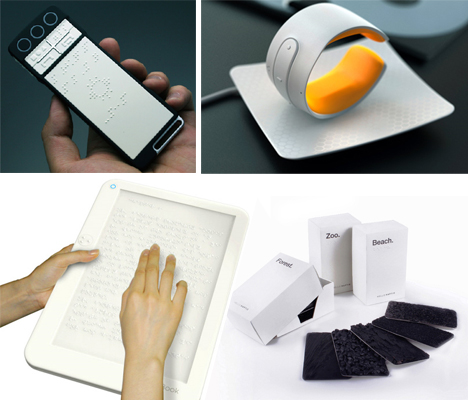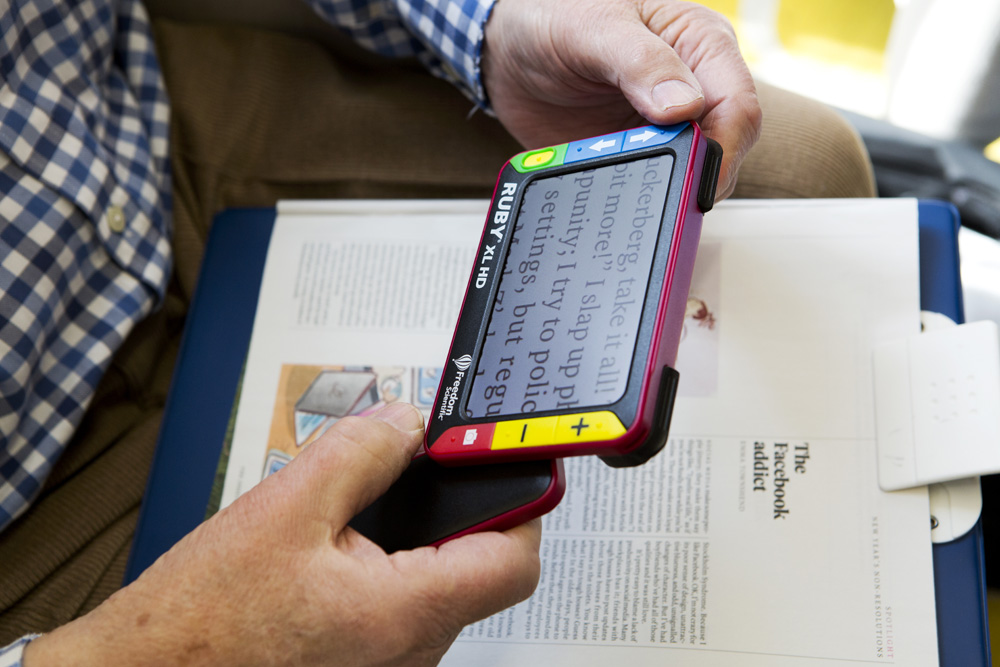Assistive Technology for the Blind: Tools to Transform Lives
Assistive Technology for the Blind: Tools to Transform Lives
Blog Article
Discover Innovative Tools Designed for the Aesthetically Impaired
The development of cutting-edge devices for the visually impaired represents a considerable improvement in accessibility and freedom. Technologies such as wise glasses with AI capacities and mobile applications designed to offer acoustic descriptions are improving daily experiences for customers.
Smart Glasses for Navigation

Smart glasses created for navigation are reinventing the method aesthetically damaged individuals communicate with their setting. These innovative tools utilize a mix of cam technology, expert system, and acoustic comments to provide real-time info regarding surroundings. By using barrier detection systems, wise glasses can inform customers to possible hazards, making it possible for safer flexibility in both unknown and familiar setups.
The assimilation of GPS technology additionally boosts navigating abilities, enabling users to obtain acoustic instructions as they relocate. This hands-free technique not just fosters self-reliance yet additionally equips visually impaired people to browse metropolitan landscapes with raised self-confidence. Furthermore, many wise glasses are geared up with functions that identify spots and road signs, offering contextual details that enhances the customer experience.
Moreover, the development of these tools is continuously progressing, with business functioning to boost the accuracy of things recognition and expand the range of navigational functions. As clever glasses come to be extra obtainable and affordable, they hold the prospective to considerably change life for aesthetically impaired individuals. Inevitably, these ingenious tools represent an important action towards inclusivity, offering enhanced flexibility and a greater feeling of freedom for people browsing the globe around them.

Mobile Application for Daily Living
How can mobile applications enhance the day-to-days live of aesthetically impaired people? Mobile applications are changing the method aesthetically damaged customers browse their environments, handle day-to-day tasks, and accessibility information. These applications supply important support with numerous performances, fostering freedom and improving high quality of life.
Numerous ingenious mobile applications are created particularly for day-to-day living. For example, apps like Be My Eyes connect aesthetically damaged individuals with sighted volunteers via video telephone calls, permitting them to receive real-time help with jobs such as reviewing tags or navigating unknown areas. Seeing AI, established by Microsoft, utilizes artificial knowledge to describe surroundings, reviewed message, and identify objects, effectively changing a mobile phone right into an effective device for everyday help.
In addition, navigation apps tailored for the aesthetically damaged, such as Aira and BlindSquare, supply audio-based directions and ecological info, making it possible for customers to traverse their environments safely and confidently. Past navigating and immediate support, mobile applications likewise sustain organization and job monitoring, with features that aid individuals set reminders, develop order of business, and track consultations. In summary, mobile applications act as crucial resources, equipping visually impaired individuals to lead more independent and fulfilling lives.
Wearable Technologies for Aid
Empowerment with technology is progressively noticeable in the world of wearable gadgets made to aid visually impaired people. These ingenious devices integrate perfectly into life, boosting navigating and supplying important feedback to customers. Wise glasses equipped with video cameras can review and acknowledge faces text out loud, allowing customers to interact more confidently in professional and social settings.
An additional remarkable development is making use of haptic responses systems in wearable tools. These systems use vibrations or other responsive signals to share details regarding the user's setting, such as obstacles or modifications in surface, enhancing wheelchair and security. Wearable technologies additionally include wristbands that connect to smart devices, informing users to notices through refined vibrations, thus enhancing connectivity without reliance on aesthetic cues.
As these innovations proceed to evolve, they are not only boosting independence for visually impaired people however additionally promoting a greater sense of inclusion in culture. By bridging the space between obstacles dealt with in everyday living and the capacity for autonomy, wearable modern technologies work as crucial tools in the mission for equal rights and empowerment for those with visual disabilities.
Audio Summary Tools
Sound description devices play an important function in boosting access for aesthetically damaged individuals, supplying them with the capacity to engage with aesthetic media. Speech-to-text devices for low vision. These tools supply narrated descriptions of vital aesthetic aspects in movies, television programs, and live efficiencies, making sure that customers can totally understand the context and emotions shared with visuals
Audio summary can helpful site be incorporated into various systems, including streaming services, cinema testings, and live movie theater. Many popular streaming solutions currently consist of audio summary as an availability feature, enabling customers to select it conveniently. In enhancement to conventional media, specialized apps also exist, offering audio summaries for art exhibitions, galleries, and various other cultural events.
The performance of audio description rests on the ability of the narrators, who need to communicate visual information succinctly without diminishing the initial audio. Developments in this area are likewise paving the way for even more individualized experiences, where customers can change the level of information and pacing according to their preferences.
Braille Innovations and Gadgets
Braille developments and tools have substantially transformed the way aesthetically damaged people connect with message and info. Modern developments have brought about the growth of flexible devices that boost proficiency and self-reliance among customers. Notably, Braille show innovations have actually developed, permitting dynamic reading experiences. These gadgets convert electronic text into Braille, allowing individuals to access a vast array of info on tablets, mobile phones, and computers.
Additionally, mobile Braille notetakers integrate conventional Braille input with contemporary capabilities, facilitating note-taking, scheduling, and document editing and enhancing on the go. Braille displays and notetakers. These small devices often feature text-to-speech abilities, linking the gap between Braille and acoustic info
In addition, ingenious Braille printers have actually arised, enabling individuals to produce Braille tags, files, and instructional products efficiently. This access promotes greater engagement in expert and academic settings, inevitably advertising inclusivity.
Furthermore, study right into smart Braille innovations remains to expand. Gadgets that incorporate expert system are being explored to give real-time navigating aid and contextual info, improving the user experience in varied settings. Overall, these advancements mirror a commitment to encouraging visually impaired individuals with innovation, guaranteeing they can easily accessibility and engage with the world around them.

Final Thought
The development of cutting-edge tools for the aesthetically damaged dramatically improves self-reliance and quality of life. Smart glasses, mobile applications, wearable modern technologies, audio summary devices, and Braille advancements jointly encourage individuals by offering crucial navigating assistance, ecological understanding, and improved analysis experiences. These innovations not only foster greater inclusion however also promote freedom in daily tasks, inevitably adding to a more fair and obtainable society for visually impaired individuals. Continued growth in this field holds assurance a fantastic read for additional improvements.
As clever glasses end up being more affordable and obtainable, they hold the prospective to considerably transform everyday life for visually damaged customers. Mobile apps are changing the method aesthetically damaged individuals browse their environments, handle daily jobs, and gain access to details. Apps like Be My Eyes connect aesthetically damaged individuals with sighted volunteers by means like this of video clip phone calls, permitting them to receive real-time support with tasks such as checking out labels or browsing strange areas.In addition, navigation apps tailored for the visually impaired, such as Aira and BlindSquare, supply audio-based instructions and ecological info, making it possible for individuals to traverse their surroundings securely and confidently.The development of ingenious devices for the visually impaired dramatically enhances self-reliance and top quality of life.
Report this page